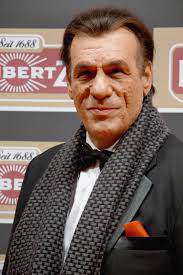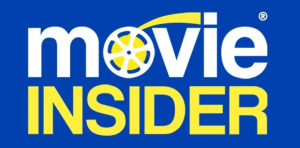Reagan 2024

In this gripping biopic, the unlikely rise of Ronald Reagan from small-town America to international leader is seen through the eyes of Viktor Petrovich, a KGB veteran whose own trajectory intersects with Reagan's as they navigate the intrigue of Cold War-era Hollywood and Washington.
Does Reagan have end credit scenes?
Yes!
Reagan does have end credit scenes.
Actors
Meet the cast of Reagan and learn about the talented actors who brought the characters to life. Explore their roles and career highlights.

Kevin Dillon
Jack Warner

Mark Moses
William 'Judge' Clark

Jon Voight
Viktor Petrovich

Lesley-Anne Down
Margaret Thatcher

Dennis Quaid
Ronald Reagan

Nick Searcy

Jennifer O'Neill
Older Nelle Reagan

Xander Berkeley
George Shultz

Penelope Ann Miller
Nancy Reagan

Robert Davi
Leonid Brezhnev

Dan Lauria
Tip O'Neill

C. Thomas Howell
Caspar Weinberger

Justin Chatwin
Jack Reagan

Mena Suvari
Jane Wyman

Amanda Righetti
Nelle Reagan

David Henrie
Young Reagan

Kevin Sorbo

Marshall R. Teague

Trevor Donovan
John Barletta

Ryan Whitney
Links
Explore where to watch Reagan online. Find reviews, ratings, and detailed movie information on other platforms like Metacritic, Rotten Tomatoes, IMDb or TMDb
Ratings
Discover how Reagan is rated on popular platforms like IMDb, Metacritic, and TMDb. Explore audience and critic scores to see how this movie ranks among the best.

22
Metascore
6.0
User Score


18%
TOMATOMETER

98%
User Score

6.2 /10
IMDb Rating

63
%
User Score

2.2
From 14 fan ratings

4.53/5
From 114 fan ratings
Movie Quiz
Challenge your knowledge of Reagan with an engaging quiz. Test your memory of the movie’s characters, plot twists, and unforgettable moments.
Reagan: The Crusader Quiz: Test your knowledge on the biopic exploring the life and presidency of Ronald Reagan.
What year was Reagan shot as he departed the Washington Hilton?
Plot Summary
Get the full story of Reagan with a detailed plot summary. Dive into its themes, characters, and the twists that make it a must-watch.
Drawing inspiration from Paul Kengor’s insightful book, The Crusader: Ronald Reagan and the Fall of Communism, this biographical film explores the life, challenges, and accomplishments of the 40th President of the United States.
The story unfolds in 1981, as President Ronald Reagan approaches the podium to address the AFL-CIO’s Building and Construction Trades at the Washington Hilton. However, as he exits the venue, an unexpected tragedy strikes—gunshots ring out, severely injuring him, despite initial reports suggesting he was unharmed.
Fast forward to present-day Moscow, where Russian agent Andrei Novikov (Alex Sparrow) is on a quest for answers from the former KGB agent Viktor Petrovich. Petrovich, who had the assignment of monitoring Reagan throughout his presidency, reflects on the ambitious Soviet initiatives aimed at infiltrating Washington, D.C., and Hollywood’s glamor.
He delves into Reagan’s modest beginnings in northern Illinois. His father, Jack, struggled with alcoholism, while his mother, Nelle, instilled in him a strong foundation of Christian values. Through trials and hardships, Reagan underwent a significant spiritual awakening, eventually becoming a born-again Christian baptized by Rev. Cleaver (Kevin Sorbo). To support himself, he worked various jobs, including lifeguarding and radio announcing.
Hollywood’s allure beckoned, leading Reagan to an acting career with Warner Bros. His rise as a leading man faced challenges post-World War II, yet he remained undeterred and was elected president of the Screen Actors Guild in 1947. During the turbulent Hollywood blacklist period, he became an FBI informant and battled against union organizer Herbert Sorrell (Mark Moses). Unfortunately, his marriage to actress Jane Wyman ultimately crumbled due to his escalating political engagements and the heartbreaking loss of their daughter Christine.
In a moment of serendipity, Reagan crossed paths with actress Nancy Davis in 1949. He managed to have her name cleared from the blacklist, which had mistakenly categorized her with another individual. Their romance flourished, culminating in a marriage ceremony in 1952. Transitioning to television, Reagan captivated audiences through advertisements and the General Electric Theater program.
Political aspirations ignited in 1964 when he fervently campaigned for Republican presidential nominee Barry Goldwater, delivering his iconic “A Time for Choosing” speech that marked the launch of his political journey and ultimately led to his candidacy for the California governorship in 1966.
As governor, he faced substantial challenges, particularly in 1969, when student protests erupted at the University of California, Berkeley. In response, he decisively mobilized the state National Guard to restore order.
In 1970, the Reagans joined renowned singer Pat Boone (Chris Massoglia) and pastor George K. Otis for prayers, where the prophecy of Reagan’s future presidency was foretold if he held onto his faith.
Years later, Reagan campaigned for the Republican nomination against incumbent President Gerald Ford, whose image flickered through old footage as Ford ultimately lost to Democrat Jimmy Carter. Unfazed, Reagan launched another presidential campaign in 1980, winning and forming an unexpected friendship with Tip O’Neill, the Democratic Speaker of the House.
The narrative circles back to 1981, as President Reagan recuperates from the assassination attempt, welcomed by O’Neill at his hospital bed.
In the Oval Office, tensions rose between Reagan and budget director David Stockman regarding his ambitious tax proposals. During an air traffic controllers strike, Reagan took a firm stance, immediate dismissals for those refusing to return to work within 48 hours.
Entrusting George Shultz as Secretary of State, Reagan aimed to navigate delicate diplomatic relations with the Soviet Union. Petrovich revealed Reagan’s intense anti-Communist convictions, rooted in a childhood encounter with a Russian refugee at his church, a belief that persisted through Hollywood disputes and influenced his reading habits. This strong conviction led Petrovich to bestow upon him the title “The Crusader,” often referring to Reagan in discussions with Novikov.
Despite Shultz’s attempts, Reagan aggressively labeled the Soviet Union an “evil empire” in 1983, exacerbating tensions. This situation escalated following the shooting down of a Korean Air passenger jet carrying a U.S. congressman, sparking protests against Reagan’s management of the AIDS crisis.
In 1984, Reagan secured re-election by defeating Democratic contender Walter Mondale (John Gibson Miller).
By the second term, challenges had emerged as Leonid Brezhnev’s successors died while in office, complicating diplomatic talks. Reagan’s frustration was palpable as he lamented, “How can I negotiate with them if they keep dying on me?!”
A vital meeting was arranged with U.K. Prime Minister Margaret Thatcher, who successfully encouraged him to engage with Soviet leader Mikhail Gorbachev in Geneva, Switzerland. Staying at a house adorned with goldfish, Reagan made a heartfelt promise to care for them, but after a fish met an unfortunate fate, he left an apologetic note and pledged replacements.
In 1985, world leaders gathered in Geneva for nuclear disarmament discussions. Though progress was made, President Reagan hesitated to sign an agreement, hindered by his staunch support for the Strategic Defense Initiative, known as “Star Wars.”
The year 1986 brought turmoil with the explosion of the Iran-Contra affair, where Reagan faced potentially grave impeachment threats amid accusations of secretly trading arms for hostages. Initially refuting any involvement, he had to pivot during a serious Oval Office address.
Despite reservations from Secretary of State George Shultz, Reagan boldly stood near the historic Brandenburg Gate, declaring: “Tear down this wall!”, a powerful statement aimed at Gorbachev regarding the Berlin Wall, a potent symbol of Cold War division. As Reagan’s presidency reached its conclusion in 1989, the Berlin Wall fell, leading to the disintegration of the Soviet Union two years later and marking the closure of a significant chapter in world history.
In retirement, Reagan faced personal struggles with troubling memory lapses. A diagnosis of Alzheimer’s disease cast a somber shadow over his later years. In a poignant farewell, he took one last horseback ride with John Barletta, his loyal Secret Service agent who shared his passion for horses. Reagan passed away in 2004, leaving a lasting legacy that transcended politics. World leaders gathered in homage at his funeral, honoring a man instrumental in shaping history.
As the credits rolled, archival images and engaging narratives painted a fuller portrait of Reagan’s life, including the pivotal move of Nelle and Jack Reagan to Hollywood, where Nelle dedicated herself to volunteer work while managing fan correspondence. Nancy Reagan, who survived her husband by a decade, played a huge role in the creation of the Reagan museum and library in Simi Valley, California.
A heartwarming post-credits sequence offered a glimpse into Reagan’s enduring compassion, featuring a letter from a young boy mourning his pet fish’s loss, alongside Reagan’s thoughtful response, a gesture encapsulating his genuine empathy for the people he served.
Keywords
Discover the keywords that describe the themes and topics of the movie. Explore the keywords that define the essence of the film.
Featured on this page

What's After the Movie?
Not sure whether to stay after the credits? Find out!
Check out our other apps:
Actors
Companies
Latest Movies
© 2025 What's After the Movie. All rights reserved.














